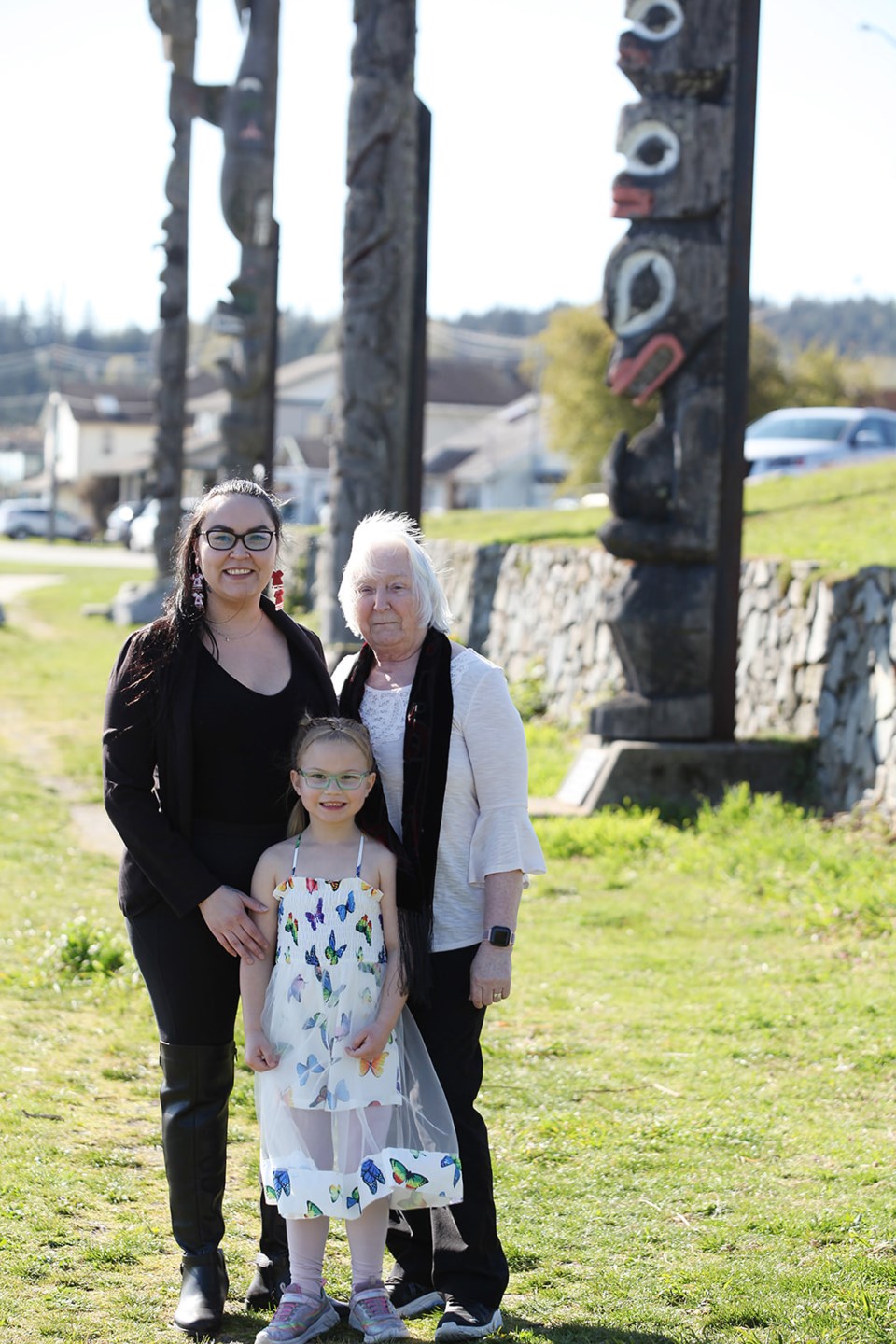Amanda Dixon, the new Indigenous Patient Navigator at Sechelt | shíshálh Hospital, is helping change the way Indigenous patients access and experience health care on the Coast. She’s part of the team creating healthy spaces and healing environments for all patients, and it runs in her family.
A member of shíshálh Nation and born at Sechelt | shíshálh Hospital, Amanda’s career in health care started in 2011 working in security. Watching the flow of patients from her post, she became inspired to work with Elders. She attended Capilano University to become a health care assistant, then worked as a Care Aide at Totem Lodge for two years before she completed the Aboriginal Health and Community Administration program at UBC and became the Interim Health Manager with the shíshálh Nation.
Fast-forward to today, and she is back in the hospital helping Indigenous patients navigate the health care system, serving as a personal advocate to patients and families, connecting them to community resources, and supporting their return home.
“My work is centered around making primary care more comfortable and accessible,” says Dixon. “It’s important that Indigenous patients are able to access quality and equitable care and that we breakdown barriers to healing.”
Part of that work, she explains, has also involved bringing traditional, local medicine into health care spaces for patients to access by request.
“We use primarily cedar and sweet grass, and perform smudging and feather brushing ceremonies for patients,” she explains. “I’ve performed this at the hospital six times since January, and I also visit Christenson Village, Silverstone, and Sumac Place, our tertiary mental health facility in Gibsons, to provide smudging and brushing for patients there. It’s an important part of the healing process.”
Cedar is regarded as a powerful medicine that promotes cleansing, protection, and healing —both mentally and physically — making it a key tool in a patient’s overall well-being. Amanda received full support from the hospital in making this medicine available in all units, and protocols are in place to ensure the smoke does not affect other patient spaces.
Amanda is not the first member of her family to make an impact on local health care. Her mom, Linda Bitting, has been tirelessly keeping Sechelt | shíshálh Hospital clean for 15 years and counting. In that time, she and the environmental services team ensured that the hospital, staff, and patients were kept safe throughout the COVID-19 pandemic — no small feat with evolving protocols in cleaning along the way — and earned Sechelt| shíshálh Hospital a reputation as one of the best performing hospitals for cleanliness.
“I’m very proud of my daughter,” comments Bitting. “She’s come a long way. My hope is that we see more health care workers here on the Coast, as well as a better understanding of all cultures brought into our practices in the future.”
Healthy spaces and healing environments are certainly shaped by the physical elements of a structure, its equipment, and proper cleanliness and sanitation, but they are also shaped by the emotional and spiritual elements, a sense of cultural safety for all patients. Most importantly, they are shaped by the people and caregivers who work there everyday. In many instances, housekeepers and maintenance team members who work at all hours often provide conversation and a different kind of support to patients and caregivers, helping the nurses, social workers, care aides and new roles like patient navigators to create a safe, welcoming environment.
Maintaining healthy, healing space at Sechelt| shíshálh Hospital is something that both mom and daughter strive for everyday.



